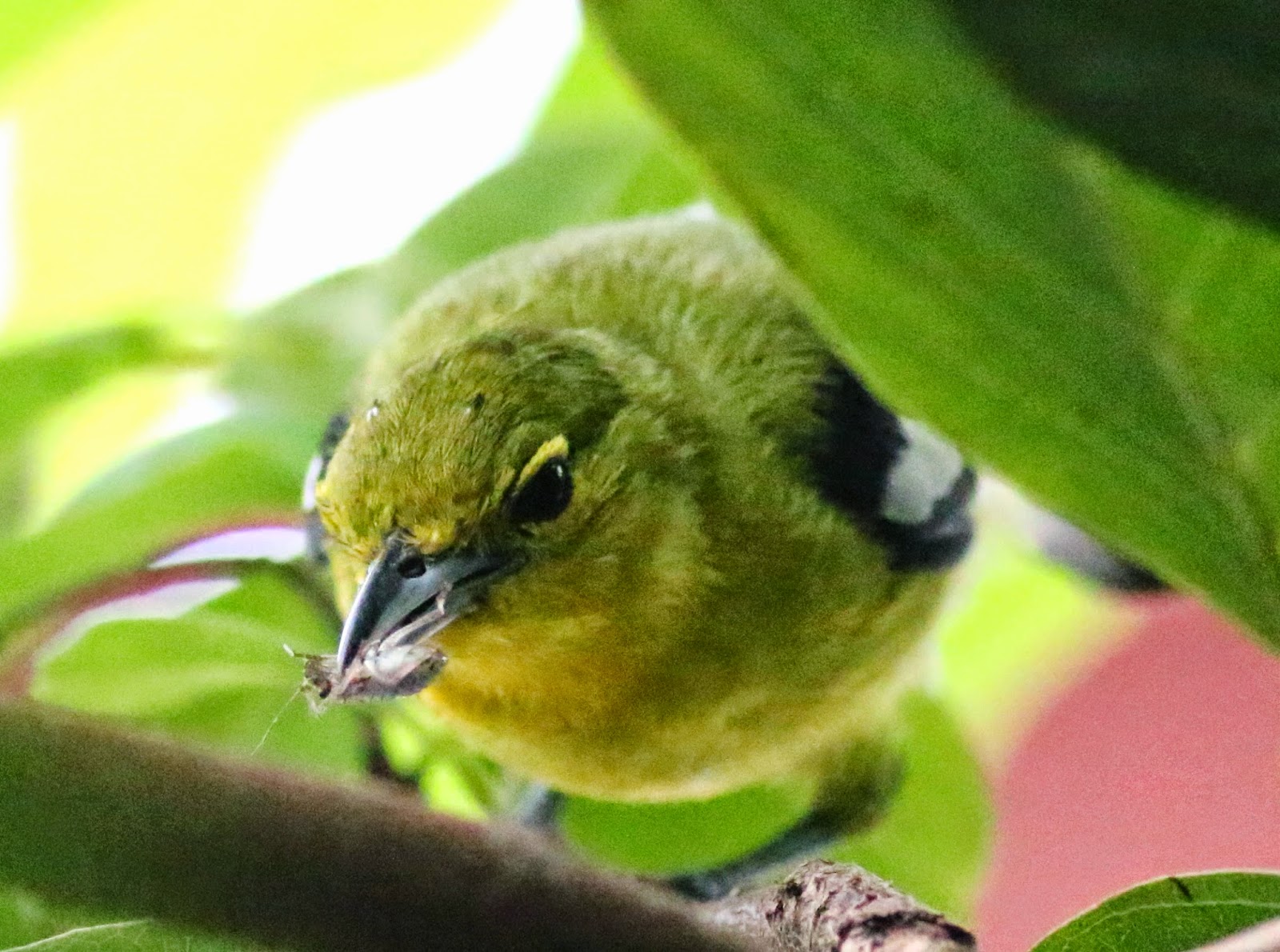Some common birds can provide us with intriguing features or characteristics which we may at times overlook in the field. One of those birds is the Common Iora (Aegithina tiphia). Common as it may sound, it is actually not even in the top ten list of birds sighted in Malaysia (see extract of record taken from Bird i-Witness below).
2. Yellow-vented Bulbul (Pycnonotus goiavier)
3. Pacific Swallow (Hirundo tahitica)
4. Greater Racket-tailed Drongo (Dicrurus remifer)
5. White-throated Kingfisher (Halcyon smyrnensis)
6. Pin Stripped Tit-babbler (Macronous gularis)
7. Crested Serpent-eagle (Spilornis cheela)
8. Spotted Dove (Streptopelia chinensis)
9. Little Egret (Egretta garzetta)
10. Common Myna (Acridotheres tristis)
It is also not in the top twenty list of birds in 'My Garden Birdwatch' record from 2010 to 2014. However if you have read about its distribution areas, Common Iora was once reported as common in mangroves but it can now be found in forest edges as well as in parks and gardens. The feature which i have wanted to highlight here is its white rump (see photo below).
 |
| Common Iora (Aegithina tiphia) |
There are not many books, field guides, images or articles out there with the exception of "Birds of Borneo" (2014) by Wong Tsu Shi and "Birds of Borneo" (2001) by G.W.H Davison and Chew Yen Fook which showed or described the white rump on Common Ioras. Recently i have an opportunity to witnessed this Common Iora displaying its massive white rump. According to Davison & Chew (2001), "rump may seem white especially in flight, owing to the long white flank plumes". In view of the presence of another common iora at that time, there are two possibilities which i reckoned might explain such behavior:
i) a display meant to attract another common iora to mate.
ii) a warning display for a suspected predator (it should be me in this case!).
Here are more photos of the above Common Iora:
It has caught a cricket .
You can also see part of its white rump here
As i was unable to get a clear view of the other common iora which was foraging quite high up, i am not sure whether the photos below represent the bird. Awhile later this common iora was seen near the first iora and probably may have descended from the tree that it was initially foraging.
They looked remarkably similar but this bird appears more yellowish than the earlier bird right ? If it is true then perhaps there is a possibility that the initial Common Iora (presumably a male) was displaying its white rump to attract the above bird (which presumably a female).
So the next time you are in the field again do look closely at common birds as well !
Note: i) Philip D. Round et al., in Forktail 30 (2014), 28 - 33 reported that "most of the South-East Asian insectivorous landbirds usually breed during the first half of the year i.e. between Jan and July".
ii) It has also been reported that the sexing of birds should moved from using color, morphometric measurements or behavioral differences to a more reliable molecular techniques such as DNA techniques (Guo-Jing Weng et al., as cited in Forktail, 30 (2014): 96-103)




























